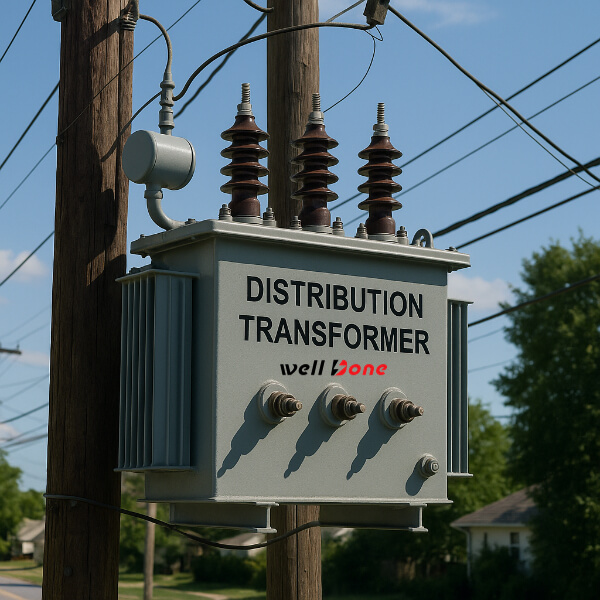Hot Keywords:
- All
- Product Name
- Product Keyword
- Product Model
- Product Summary
- Product Description
- Multi Field Search
Views: 0 Author: Site Editor Publish Time: 2025-05-12 Origin: Site









Distribution transformer steps down voltage from distribution lines (typically ≤ 34.5 kV) to service voltages (≤ 600 V), delivering power at frequencies of 50/60 Hz for final customer use. Liquid-immersed units range from 10 to 2 500 kVA, while dry-type units range from 15 to 2 500 kVA in capacity. They form the last voltage‐conversion stage, supplying homes, businesses, and light industries with stable, regulated power.

The core comprises stacked, silicon-steel laminations bonded to reduce eddy-current and hysteresis losses. Windings of enamel-coated copper or aluminum wire are insulated with resin-impregnated paper; the turn‐ratio between windings determines the voltage conversion.
Windings and core are immersed in dielectric fluid (mineral oil or eco-friendly esters) inside a sealed tank, which both insulates and dissipates heat. Cooling relies on natural convection (ONAN) for small units; larger units may employ forced oil (OFAF), fans (ONAF), or oil-to-water heat exchangers for enhanced thermal control.
Common fittings include conservator tanks, breather units, Buchholz relays, pressure-relief devices, and tap-changers for voltage regulation. Overcurrent protection is provided by fuses or circuit breakers, while surge arresters safeguard against transients.
Elevated on utility poles, these single- or three-phase units serve rural and suburban feeders; self-protected models contain internal fuses for rapid fault isolation.
Installed at ground level within locked enclosures on concrete pads, pad-mount transformers offer secure, low-profile service for urban and residential developments.
With epoxy-encapsulated windings and no liquid coolant, dry-type transformers are suited for indoor or confined spaces where fire safety is paramount.
Core losses (hysteresis and eddy currents) occur whenever the transformer is energized, while copper losses (I⊃2;R) depend on load current. Designs prioritise low core losses to optimise “all-day” efficiency under light to moderate loading.
At full load, efficiencies reach 98–99 %; all-day efficiency accounts for varying load cycles and is a key metric in energy conservation standards. Compliance with DOE and ENERGY STAR criteria ensures cost-effective, eco-friendly performance.

Site selection addresses ventilation, grounding, clearances, and accessibility. Correct pad or pole mounting, proper oil filling, and tight fastening of bushings and gaskets are crucial for safe operation.
Regular oil testing (dielectric strength, dissolved gas analysis) detects early faults; thermal imaging identifies hot spots; mechanical inspections verify tap-changer functionality, bushing integrity, and breather saturation levels. Scheduled preventative maintenance extends service life and minimises unplanned outages.
Distribution transformers are engineered for durability, efficiency, and reliability, underpinning the final leg of power distribution. Their thoughtful design—guided by international standards—ensures that electricity reaches consumers safely, quietly, and with minimal losses, contributing to grid stability and energy conservation.